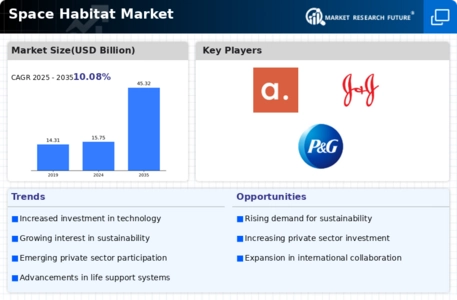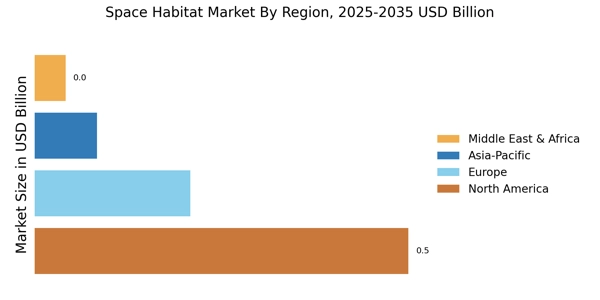Emergence of Space Tourism
The emergence of space tourism is poised to transform the Space Habitat Market. As private companies develop commercial space travel options, the need for habitable environments in space becomes increasingly critical. Space tourism not only opens new revenue streams but also drives advancements in habitat technology to ensure safety and comfort for tourists. The anticipated growth in this sector could lead to the establishment of space hotels and recreational facilities, necessitating the design of habitats that cater to non-professional astronauts. This burgeoning market may significantly influence the direction of research and development within the Space Habitat Market.
Expansion of International Space Missions
The expansion of international space missions is a significant factor propelling the Space Habitat Market. Collaborative efforts among nations, such as the International Space Station (ISS) program, have demonstrated the feasibility of shared habitats. As more countries develop their own space programs, the need for habitats that can support diverse missions becomes apparent. This trend is likely to lead to increased demand for modular and adaptable habitat designs that can accommodate various scientific and exploratory objectives. The collaborative nature of these missions may also foster innovation and knowledge sharing, further enhancing the capabilities of the Space Habitat Market.
Increased Investment in Space Exploration
Investment in space exploration is a primary driver of the Space Habitat Market. Governments and private entities are allocating substantial resources to develop habitats for missions to the Moon, Mars, and beyond. For example, the Artemis program aims to establish a sustainable human presence on the Moon by the end of the decade, which necessitates the development of advanced habitats. This influx of funding not only accelerates research and development but also stimulates job creation in related sectors. The anticipated growth in investment is expected to enhance the capabilities of space habitats, making them more viable for long-term human habitation.
Rising Demand for Sustainable Space Solutions
The Space Habitat Market is increasingly influenced by the rising demand for sustainable solutions in space. As environmental concerns grow, there is a push for habitats that utilize renewable resources and minimize waste. Innovations such as bioregenerative life support systems, which integrate biological processes to recycle waste, are gaining traction. This shift towards sustainability aligns with broader global trends in environmental responsibility, making space habitats more appealing to stakeholders. Companies that prioritize sustainable practices are likely to gain a competitive edge, thereby driving growth in the Space Habitat Market.
Technological Innovations in Life Support Systems
The Space Habitat Market is experiencing a surge in technological innovations, particularly in life support systems. These advancements are crucial for sustaining human life in extraterrestrial environments. Enhanced recycling systems for air and water, along with improved food production technologies, are being developed to ensure long-term habitation. For instance, NASA's recent projects indicate that efficient life support systems could reduce the need for resupply missions, thereby lowering operational costs. The integration of artificial intelligence in monitoring and managing these systems further enhances their reliability. As these technologies mature, they are likely to attract investments and partnerships, fostering growth within the Space Habitat Market.


















Leave a Comment